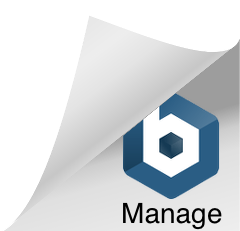Improving healthcare outcomes by focusing on Team and Patient Experience.
At a Glance
OVERVIEW
Symbio Strategies partnered with a leading Integrated Care consultancy as part of a multi-year initiative to improve healthcare outcomes for the most complex and expensive patient care. We developed a customized measurement and education system, which included a team member/employee experience survey and a patient/customer experience survey. The transformational effects of meaningful measures with relevant education support front-line teams. It also consistently inform leadership of the most important aspects that create long-term value.
OPPORTUNITY
We were invited into a behavioral health and integrated complex care initiative to help address two key areas of healthcare Quadruple Aim, Team Experience and Patient Experience. Our goals included:
-
- Upholding the priority of integrating medical and behavioral health care for the most complex patients, using new methods, measures and supports.
-
- Co-creating interventions across stakeholders: implementation team, sites/clinics and health plan.
-
- Serving the overarching imperative of increasing quality, reducing costs and introducing a whole-person approach to care.
- Educating about the driving connection between team experience and patient experience.
APPROACH
Three core components or phases outline our innovative work within this collaboration:
-
- The design of a 3-minute Team Experience survey, consistently offered monthly and focused on the emotional attributes most important to creating engagement.
-
- Addressing quality, access and meaning through a tablet-based Patient Experience survey. Upholding that every voice, every time, creates meaningful feedback.
- Empowering and engaging all staff through guided learning and development via custom videos, on-site support, exercises, and emphasis on participation, not scores. Coaching and tracking of meaningful review sessions to support real-time feedback.
BARRIERS TO SUCCESS
While 11 out of 33 sites defined new industry best practices, three barriers prevented sites from contributing fully to the experience initiative:
-
- Lack of leadership engagement,
-
- Mis-aligned resources, including time,
- Bias held in traditional methods.
CLIENT CREATED VALUE
With any transformation endeavor, we set out objectives. The value of our work is defined by how the information and systems were used by those who fully committed to Experience:
-
- Sites were adaptable to the needs of staff, patients and the initiative, and able to calibrate accordingly. Value Creation: Responsiveness to needs of the humans serving and receiving care.
-
- Initiative Leaders and Coaches with our guidance co-created all aspects of the Experience work. Value Creation: Ownership and Autonomy to reframe, design and evolve Experience work for themselves.
- Sites who were defined as having developed best practices provided a window for other site leaders and initiative coaches. Value Creation: The realization that learning about what is working and why is more meaningful and encouraging than a singular focus on the barriers or what did not work.
The BHICCI Experience Story
Opportunity
Healthcare in the US is one of the most expensive in the world with a mix of outcomes to show for it for the general population of patients. For those patients who face complex health issues, this expense to outcomes imbalance, means that they are often “lost” within a system focused on the basics of health and confounded by the specialty model. They are ‘specialty’ care which often means siloed care. These are individuals with not only behavioral health challenges such as depression, addiction and schizophrenia, but also medical challenges such as diabetes or high blood pressure. Though these issues are often interconnected, they are seldom addressed together for the individual human experiencing them.
One reason for this challenge is a lack of integrated focus on two key areas of the Quadruple Aim, team experience and patient experience. Both factors work together to drive critical healthcare outcomes such as improved quality, adherence as well as compliance and overall improved financial management. Yet of the 33 sites enrolled in this innovative two year pilot study, only 3 reported that prior to the initiative they had conducted regular patient experience surveys and none had regular team experience surveys as part of their operational practices.
A leading Integrated Care consultancy invited Symbio Strategies into a multi-year initiative to help address team experience and patient experience. To conserve limited time and resources in the approach to complex care, we needed to honor the priority of integrating medical and behavioral health care using new methods, measures and supports.
Our partner was tasked with balancing openness to change with the everyday reality of an industry and patient population suspended in outdated methods of care. Thanks to their openness and desire for a whole-human approach, were able to introduce the most innovative solutions across our consulting experiences, the basis of trust from our leader partners.
Within each of three implementation phases, the following solutions were tailored to address the challenges associated with:
-
- the variation of needs by each clinic and team,
-
- the desire to facilitate vs. legislate change, and
- to ultimately create increased autonomy with site-level teams.
Our customization embraced these challenges as a compass for our work. Amidst this imperative, we faced clear and ongoing barriers within some site teams. (See Barriers to Success section.)
Approach
To foster the best opportunity for ownership as well as denote all aspects of the Experience work clearly, we branded the Experience work with a shorted ‘EXP’ and created a logo that would be a part of all materials, reporting and communication.

The unique aspects of our approach to address the opportunity with clear challenges:
1. Team Experience
-
- Monthly cadence: Consistent, focused measurement helped our partners develop greater consistency in giving their teams a voice amidst the pressures of time. Inviting input at the same time every month ensures that teams feel heard; processes are more successful when this cadence is implemented.
-
- Focus on participation, not scores: No matter how they respond, every person is given the opportunity to provide honest feedback every month.

Team Experience Goal-setting Session, Best Practice Site: SAC Health System – Norton BHI-I Team, San Bernardino, California
- Focus on participation, not scores: No matter how they respond, every person is given the opportunity to provide honest feedback every month.
-
- Simplicity: A short, 5-question electronic survey taking approximately 3 minutes to complete helped create a cadence of feedback.This efficient design honors individual time and focuses the questions on the most important aspects of experience.
- Humanness: Questions are exclusively focused on the emotional well-being of team members, not on operational aspects. Experience is treated as an individual perception based on feelings about being able to provide the best care, being valued and having meaningful follow-up. Engagement is also measured – quarterly; treated as a longer-term and evolving commitment, is measured by intent to stay and likelihood to recommend.
2. Patient Experience
-
- Time-saving methods: Our strategy included tech-based access of touch-screen tablets with an app for the patient to access the 5-question survey. Data is captured immediately and delivered monthly to the patient reporting portal, increasing quality, patient access and overall efficiency.
-
- Participation, not scores: Moving away from scores ensured that “gaming” of only inviting happy patients was an eliminated risk. This approach increased the volume of responses, honoring that accurate feedback is more important than positive feedback.
-
- Simplicity: We offered patients a 3-5 minute experience, a refreshing change from the industry standard of 15+ minute surveys (which are often on paper with complicated language and additional steps to enter the data). Incorporating smiley to frowny faces made it easier for patients in behavioral health to understand the information, and leveraged the use of health-related icons in healthcare.
- Humanness: As with the employee experience survey, questions are focused on the emotional aspects of the patient’s experience. Do they feel valued and treated like a whole human? Is their overall health better? This supports a focus on the inputs that create patients’ perception of care that touches them as humans. As with Team, Engagement is measured as a deeper intent focused on likelihood to recommend the services.
”People feel that they are becoming healthier because of involvement with our Team, which was very meaningful input for the Team.” – Best Practice Site Lead, BHICCI March 2018
3. EDUCATION
-
- Multimodal approach: We provided high-touch, custom-created education modules, exercises and other tools. These included written exercises, custom created videos with a dedicated channel, and monthly conference/video calls on demand. Best practice sites selected an EXP Champion to lead communication and support goal-setting.
- Flexibility: Having developed a baseline of information for all sites, we were able to adjust our support through direct communication and/or communication with Practice Coaches as sites advanced or regressed. Support through on-site visits and conferencing ensured tailored support to connect site leads with information at the time they needed it.
- Coaching: Our team used site-level data including staffing information and implementation status to provide relevant coaching to sites about how to use, support and improve Team and Patient Experience. Practice Coaches were on site with teams monthly, and when they embraced the learning and training of experience practices were core advisors to site and Health Care Organization (HCO) leadership.
Barriers to Success
LEADERSHIP ENGAGEMENT
Even with the primary Roadmap Objective in place, some HCO and site team leaders were unable to fully implement team and patient experience. In many cases, sites struggled with other aspects of the initiative as well. It was impossible to make experience a standard process at the site level; one where team members would have a consistent voice and patients would be invited to offer theirs. Various reasons inform this barrier: unclear expectations of leadership, resource challenges including physical space and getting the right staff hired and on-boarded with clear expectations.
LIMITED Resources
Implementation leads including coaches were focused on many processes at the same time, resulting in disorganization, confusion and reactivity. We encountered a lack of strategic understanding associated with how time is spent and what creates value. Insufficient time for meaningful dialogue fostered silos and disengagement. Staffing, physical space and technology were noted by staff as the most limiting aspects of their ability to do their best work.
Bias in tradition
Even amidst evidence-based stories of how new methods result in more timely access, better quality and information that is more relevant to the customer definition of care, some leaders and staff in the initiative held fast to traditional methods of measurement.
Client Value
As is the case with all transformation, where the focus is on the inputs that shift culture long-term, realization of outcomes will unfold in the 9-12 months that follow this work. Our measure of client impact comes from the value created by the outputs. These resulted from the measurement, education and coaching we co-created with the various partners serving the initiative. From our assessment, value was realized across three key consulting areas:
1. Adaptable calibration
From inception we were able to adjust our timing, delivery of information and content based on individual site needs. Implementation was based on the readiness of each site and cascaded across 6 months for each team and patient experience. Sites received clear, accessible information across 3-4 points of communication.
-
- Co-created expectations: Reporting expectations were informed by our partners based on education we provided as well as initial templates. This worked well when site leaders were engaged from the start and brought strong talent to the role.

Team Experience Goal-setting Session, Best Practice Site: SAC Health System – Norton BHI-I Team, San Bernardino, California
- Co-created expectations: Reporting expectations were informed by our partners based on education we provided as well as initial templates. This worked well when site leaders were engaged from the start and brought strong talent to the role.
-
- Access: We optimized the accessibility of information, reporting and educational tools. This helped our partners understand the data, practice setting goals and directly impact patient outcomes.
- Autonomy: Individual agency was a missing aspect of patient care and team development. With our support, leaders and coaches were empowered to use information about experience to make decisions and influence change.
2. Co-creation centered on client ownership
On a continuum of prescriptive modeling to co-created flexible modules, our work was 70% co-created and 30% prescriptive; our primary intent was to serve as a “cylinder under the hood” of an engine with many parts. Throughout the process we ensured that ownership and use of the information could be wholly and authentically led by those at the site or clinic level.
-
- Empowered leads and coaches: Site leads and coaches became “editors” or advisors of the process, information use and design. This direct involvement enhanced their emotional engagement or agency with the work.
-
- Design thinking: Because most coaches were involved from inception, they were active in the process of ideation and committed to suggesting improvements.
- Feedback culture: While learning is a priority in healthcare, consistent feedback and iteration are often not. Largely missing in the industry are continuums based on process, flow, prescription, repeat. Especially for sites, having ongoing opportunities to contribute input provided practice and confidence in engaging in dialogue about what does and does not work.
3. Best practice reporting-based education
With so much data and information being shared with and by coaches and site leads at clinics, it became clear as we planned the final reporting that a focus on what worked would be more compelling and easier to adopt than a review of lessons learned. While both will be provided, the practices that worked best are emphasized. This focus aligns to a behavioral economy and honors the best ways that we has humans connect with information.
-
- Comparison-based understanding: Learning associated with how others do “like me” or “how I did compared to the beginning of time” invites a meaningful calibration against which to develop change efforts and data-based measures. Sites that that had gaps could self-identify those against peers that had achieved these levels. In our experience, this challenges change efforts better than simply reporting in isolation for each site.
-
- Positive psychology and recognition: Sites that participated in the best practice research, analysis and reporting received direct recognition in a group of peer sites. Their achievement was highly individualized; callouts through quotes and coaching input contributed to “real life” outputs. By taking a positive analytical approach, others could celebrate their peers’ accomplishments.
- Clear objectives: No one site had all of the 6 areas of best practices defined, so all sites received an aspirational set of objectives as it pertained to practices linking to better engagement, higher participation, improving scores and ongoing ideas for contribution.
Emergent Best Practices
From an in-depth qualitative and quantitative review of 11 of the highest performing sites based on improvement over time and engagement with the process (including goal-setting and review sessions), 6 best practices emerged. They are summarized in the chart below; for a more detailed explanation of these best practices, please contact us.

Insights for Future
With any multi-year engagement, we are able to analyze data, track impact beyond the project and reconcile lessons-learned. As noted, the barriers to success remained present in nearly half of the sites. This is a continuing area of focus with respect to how we support and implement innovative change efforts.
-
What is the correct balance to hold between requiring systems and new proven methods of change while also nurturing a self-driven leadership journey of learning?
-
Does the project purpose include space and time for thinking, feedback, adaptation and an emerging growth mindset culture?
Each client is unique in their situation and needs, yet we are able to identify takeaways that can help guide future projects. Based on these insights, the following priorities would inform our team’s future work within Behavioral Health, Integrated Complex Care and Health Homes partnerships:
-
- Leadership understanding and commitment from inception, calibrated on an ongoing basis.
-
- Whole organization alignment on the purpose with a process to refine as needed.
-
- Support with staffing to ensure the right people are in place and are nurtured to own and lead objectives.
-
- Ongoing education with site teams to develop a growth mindset and guide transformation around new innovation.
-
- Practice Coach or similar resource create dedicated time to support their teams and are versed in the ‘why’ and ‘how’ of Experience.
-
- Mechanisms to enable real-time support when gaps in understanding or resistance emerge.
-
- Co-created definition of what Experience means to team members and patients. The Inputs that create experience are unique to each site, depending on who they serve and how they serve them as well as the makeup of the team.
-
- Clear process with a rigorous structure to maximize consistency, clarity and creativity. Best practice systems evolve with mechanisms that nudge the individuals to practice the desired behaviors.
-
- Continuous feedback about how data is being used in alignment with the overall purpose of the project.
- Employee experience and engagement drive patient experience and engagement; therefore, it is critical to measure and empower teams around both. If you can fund/support only one, focus on Team. Patient Experience will become an Output that creates outcomes from a strong team!
“To introduce a culture in which Team EXPerience meetings will be a monthly aspect and stress the importance of the voices and opinions of the staff. This recommendation is to showcase that care for the team is just as important as patient care.” -Best Practice Site Lead, BHICCI March 2018


